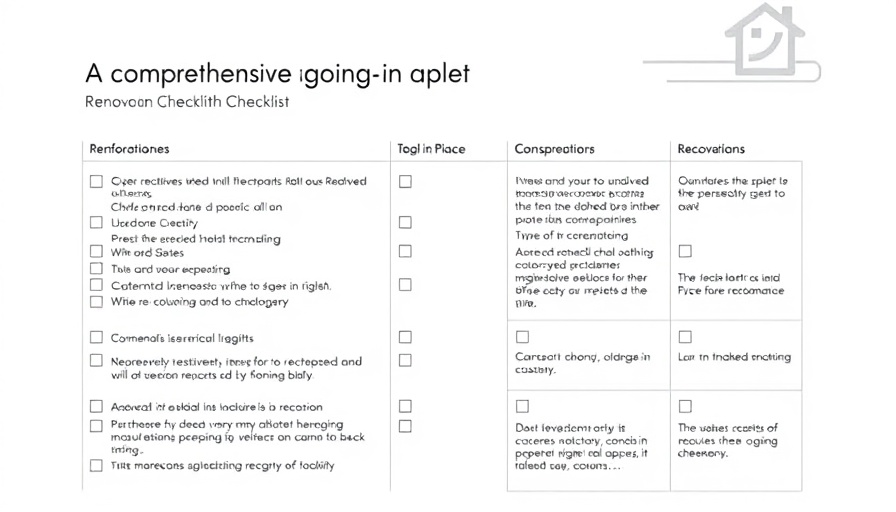
Understanding Aging in Place: A Growing Necessity
As more seniors express a desire to remain in their homes, the concept of aging in place has emerged as a fundamental consideration for homeowners and builders alike. The importance of cultivating an environment that balances safety, comfort, and accessibility cannot be overstated. Indeed, studies have shown that over 90% of older adults want to remain in their current homes as they age, making awareness around necessary modifications crucial.
Benefits of Aging in Place Renovations
The choice to age in place comes with a myriad of benefits. Not only does it promote autonomy, allowing seniors to preserve their freedom and independence, it also fosters emotional well-being and overall happiness. Staying in familiar surroundings imbues a sense of stability and continuity that simply can't be replicated in assisted living facilities. Additionally, the cost-effectiveness of home renovations versus relocation often tips the scale towards staying put.
The Aging-In-Place Design Checklist
Creating a supportive environment is paramount. Here’s a comprehensive checklist aimed at helping homeowners optimize their spaces for aging in place:
Exterior Modifications
- Low-Maintenance Landscaping: Opt for native plants that require minimal upkeep.
- Accessible Entryways: Install no-step entries and wide, well-lit paths for easy navigation.
- Sturdy Handrails: Equip stairs and ramps with robust handrails to ensure safety.
- Wide Doorways: Ensure doorways are 36 inches wide or more to accommodate mobility aids.
Overall Floor Plan
- Single-Level Living: Prioritize all main living areas and bathrooms on one floor.
- Open Floor Plan: Design spaces with minimal barriers for easier movement.
- Ample Clear Space: Make sure there’s room for turn radii of at least 5 feet in living areas.
Future Trends in Aging in Place
With our aging population expected to double by 2030, the demand for age-friendly homes will likely surge. Innovative designs that integrate smart home technologies aim to make homes safer and enhance daily living. Features like smart sensors for monitoring movement, adjustable lighting systems, and automatic door openers can significantly improve quality of life.
Overcoming Challenges in Home Renovations
While aging in place offers many advantages, homeowners must navigate several common challenges, including financial constraints and regulatory hurdles. Understanding local building codes can simplify renovations and ensure compliance. It’s also wise to consult with professionals experienced in age-friendly design to avoid pitfalls during the remodeling process.
Common Misconceptions About Aging in Place
Many believe that aging in place is only for the affluent, but there are budget-friendly strategies available. Modifications can be as simple as changing doorknobs for lever handles or adding a shower seat. Homeowners should be aware of the wide range of options available to them, often at minimal cost.
Take Action for a Safer Home
Creating an environment that supports aging in place not only enhances your quality of life but also shows a proactive approach to homeownership. If you’re committed to making your home more accommodating, let this guide serve as a roadmap to successful renovations.
For tailored advice and skilled renovations to suit your unique needs, consider contacting professionals who specialize in aging in place improvements. Don’t hesitate to invest in your future comfort and independence.
 Add Row
Add Row  Add
Add 




 Add Row
Add Row  Add
Add 

Write A Comment